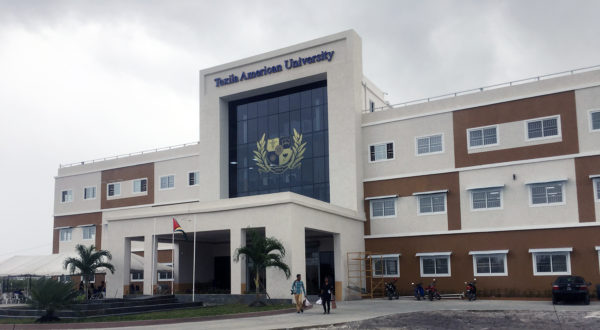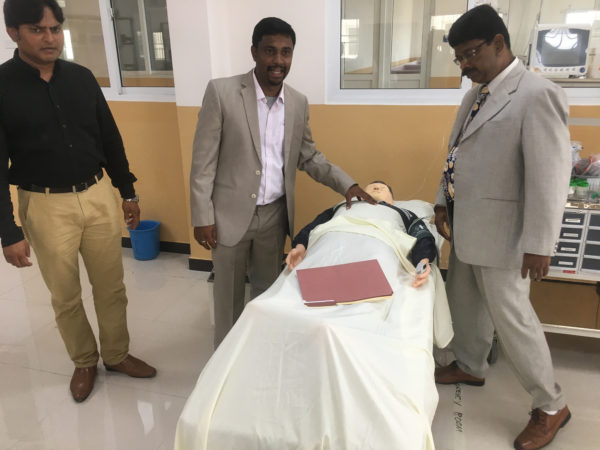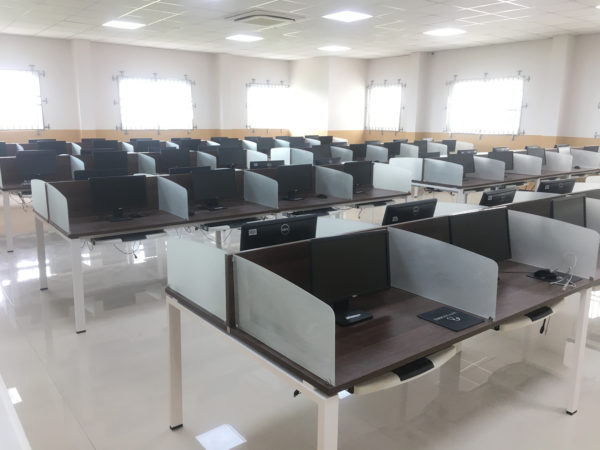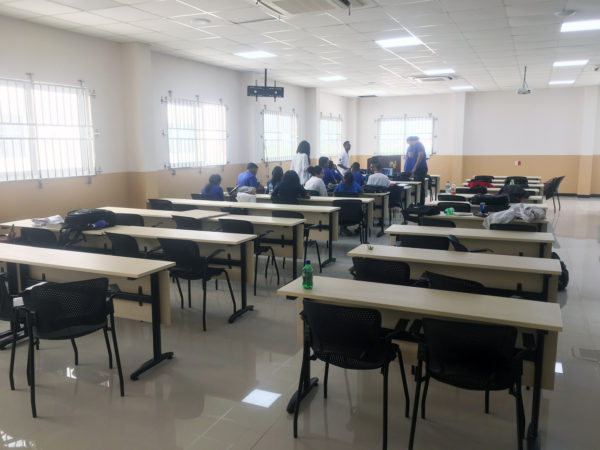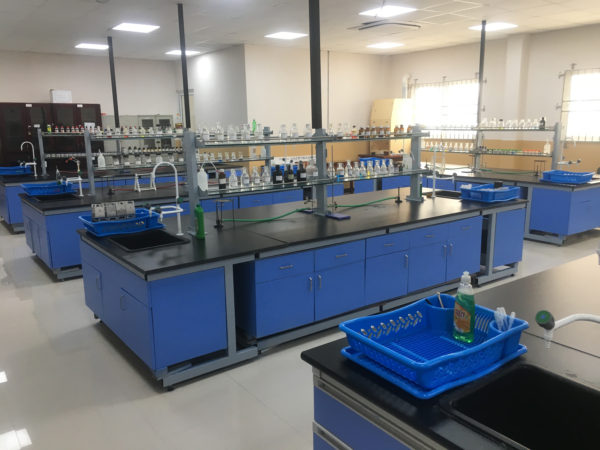Texila American University (TAU) is aiming to reverse the trend of Guyanese students going to other Caribbean countries to study with its newly-constructed $2 billion Providence, East Bank Demerara Campus.
TAU President Saju Bhaskar said that the educational institution, which has other campuses around the world—catering to close to 4,000 students from 80 countries—started with seven students. In Guyana, “We have grown to over 600 students from over 40 nationalities including those who have graduated from the Texila American University in just over six years time. We have over 100 teaching and non-teaching staff in Guyana, of which the majority are Guyanese,” he said. The guiding force throughout the years has been the confidence and belief that Guyana would be the “surrogate mother for the TAU’s operations in the Caribbean and North America,” he stated.
Asked why Guyana was chosen out of other Caribbean countries to be the “surrogate mother,” Bhaskar said this was due to the fact that Guyana was not prone to natural disasters such as hurricanes, the cost of living was the other major factor that affected that decision and investment. “The third part of the reason was because there were clinical facilities such as hospitals and educational space,” he said.
While the university has been commonly referred to as an offshore one, Bhaskar stated that the term is “very wrong” for Texila since unlike the other offshore universities where 90% of the student population are foreign and half the programme is taught there and another half in the United States of America, Texila is different since the entire programme is done in country.
“We are a local Guyana-based university and international medical school because Guyanese students can do the whole programme here and more than 20% of the students are Guyanese,” he said. Since it was normal for Guyanese students to go to other Caribbean countries to study, he added, the university was trying to reverse the trend and so far has seen an influx of Caribbean students.
The campus at Providence took some $2 billion to construct the 100,000 square feet building on five acres that has the capacity to hold approximately 1,500 students at one time.
“We’ve made a lot of investments to make it more green and more environmentally friendly by consuming less power,” he said, while explaining that the building itself was designed with specially made materials to reduce power consumption and within the coming months should be getting 80% of its power from solar energy.
While the students from the other campuses have already moved into the new one, Bhaskar pointed out that they are currently waiting on the government to officially launch and inaugurate the campus. Another major plan in the coming months is receiving accreditation from Caribbean Accrediting Authority for Medicine and Health Professional. “We are applying and waiting on the paperwork and should be submitting the documents by next week. There are very few schools accredited in the Caribbean and some of the leading universities are the University of the West Indies, St George’s and so on,” he said, while adding that he believes TAU will be “in the league of one of those universities before the end of this year.”
After the presentation by Bhaskar, media operatives were given a tour of the three-storey building and its facilities. The school is equipped with 14 large and small lecture rooms, seven state-of-the-art laboratories, a library, a full equipped computer room that can hold some 140 students at one session, and a skills room that is equipped with several real-life models.
It also has a student lounge and when construction is 100% completed should also feature several different areas for indoor and outdoor sports for the students.
In the anatomy lab, Bhaskar pointed out that in addition to plastic models of all organs and other medical figures, the university has three mummified bodies that the students use to learn. According to Public Relations Consultant Kit Nascimento, who was also present on the tour, each of the mummified bodies cost more than US$500,000 and “represents the kind of investment the school has gone through.”
Bhaskar also announced that a feasibility study for a specialty hospital that can run along with the medical school was underway. “The plan is in a very initial stage because we are just doing a market study. We are looking at the front portion of the campus because we have more lands,” he said. Under consideration is a 100-bed hospital that can cater to specialized areas such as neurology, urology, and cancer treatment. “We are just doing a feasibility study now and it might take another six months for us to take off to planning,” he added.
TAU will also be exploring the option of adding more programmes such as Information Technology, Public Health and Management.
In addition to the new and “high quality” infrastructure and equipment at the new campus, Bhaskar explained, teaching methods and management will also promote better learning. Alluding to the thousands of books and e-books that the library is stocked with, he said, “We have a learning management system so all the time any faculty will have to submit the PowerPoint before classes so that they are more of a discussion and will not just be boring where the teacher will talk and the student will listen.” He added that they will also be monitoring the progress of each student so that they can identify their weaknesses and be able to quickly address them.
Currently, the university offers four major medical programmes: Doctor of Medicine, Doctor of Dentistry, Bachelor’s Degree in Nursing and Premedical Foundation Programme. While the tuition fee is US$10,000 per year for international students, local students automatically receive a 50% scholarship discount and only pay US$5,000.

